Iron Rich Food
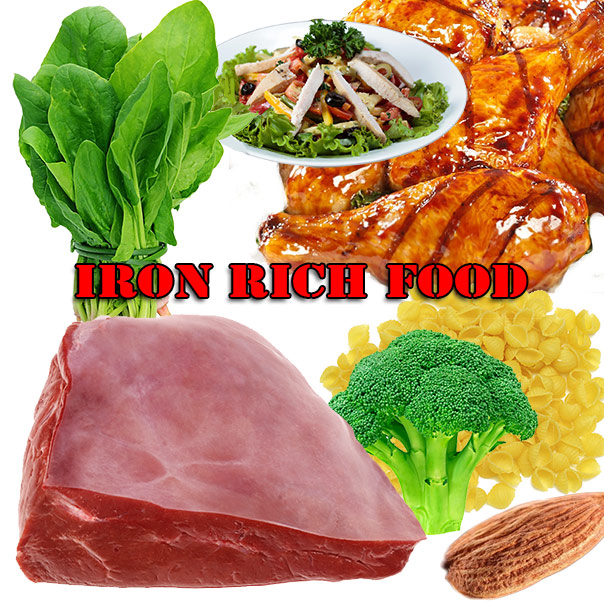
Iron is one of the key dietary minerals required for normal bodily functions. This nutrient is necessary for the production of hemoglobin, the red blood cells that carry oxygen to the body. Deficiency of this nutrient may lead to weight loss and anemia. Depletion of iron stores in our body results in iron deficiency.
Iron Deficiency And Its Causes
Iron deficiency occurs in all people whose diet includes fewer amounts of iron supplies. Women are more susceptible to iron deficiency. There are a number of factors that contribute to low iron levels.
Lack of iron in diet may lead to iron deficiency. This is more common among children and young women who consume very low levels of iron-rich foods.
Pregnancy: Women who are of child-bearing age may be lacking in iron nutrients due to menstruation. Even breast feeding mothers are at the risk of iron deficiency. These women may require 2½ times as much iron as in men. Pregnant women and breast feeding mothers should eat more iron rich foods else they may end up becoming anemic.
Milk: Cow's milk is a poor source of iron and newborn babies who are given cow's milk or formula cow's milk are at the risk of iron deficiency.
Bleeding or Blood loss is the common reason for iron deficiency. Heavy menstrual periods may cause anemia. Blood loss can also be caused by internal bleeding, usually in the digestive tract. A stomach ulcer, ulcerative colitis, cancer, or taking aspirin or similar medicines for a long time can cause bleeding in the stomach or intestines. It is therefore important to identify the cause for iron deficiency.
Food Rich in Iron
If your iron level is low, your dietitian may advice you to take iron rich foods in addition to iron/multivitamin pills. There are two types of iron in foods - heme and non-heme iron. Although iron is found in a variety of foods and supplements, its availability to the body varies significantly depending on the type of iron present in the food.
Heme iron is found largely in meat, fish and poultry. These nutrients are easily absorbed by the body compared to non-heme iron. Heme iron is also found in other animal products such as chicken and fish. Non-heme iron is found primarily in fruits, vegetables, dried beans, nuts and grain products. You can improve the absorption of non-heme iron by consuming it along with a heme-rich iron food. Avoid foods that interfere with the iron absorption by the body.
A breakfast of cereals or whole meal breads with a glass of orange juice provides rich non-heme iron in the cereals that is aided by the Vitamin C in the juice for better absorption. A combination of red meat and vegetables for lunch or dinner is a good source of iron rich food. Lean red meat offers an excellent source of iron whereas vegetables offer non-heme iron. Tomatoes, capsicum, broccoli or lean beef can aid in better absorption of this iron.
Foods Rich in Iron and RDA (Recommended Dietary Allowance) for Iron
The following table lists the foods that are rich in iron ore.
HEME Food Sources per 100 gm
| Food Source | Iron (mg) |
| Beef, liver | 7.5 |
| Beef, corned | 2.5 |
| Beef, lean ground; 10% fat | 3.9 |
| Beef, round | 4.6 |
| Beef, chuck | 3.2 |
| Beef, flank | 4.3 |
| Chicken, breast w/out bone | 0.9 |
| Chicken, leg w/bone | 0.7 |
| Chicken, liver | 7.3 |
| Chicken, thigh w/ bone | 1.2 |
| Cod, broiled | 0.8 |
| Flounder, baked | 1.2 |
| Pork, lean ham | 1.9 |
| Pork, loin chop | 3.5 |
| Salmon, pink canned | 0.7 |
| Shrimp, 10 - 2 1/2 inch | 0.5 |
| Tuna, canned in water | 1.0 |
| Turkey, dark meat | 2.0 |
| Turkey, white meat | 1.2 |
| Source: MCkinley Health center, University of Illinois | |
NON-HEME Food Sources per 100 gm
| Food Source | Iron (mg) |
| Almonds, raw | 0.7 |
| Apricots, dried, med.-size | 0.7 |
| Bagel | 1.5 |
| Baked beans, canned | 2.0 |
| Bread, white | 1.4 |
| Bread, whole wheat | 1.7 |
| Broccoli, cooked | 0.6 |
| Broccoli, raw | 1.1 |
| Dates | 1.6 |
| Kidney beans | 3.0 |
| Lima beans | 1.8 |
| Macaroni, enriched, cooked | 1.9 |
| Molasses, blackstrap | 2.3 |
| Peas, frozen and prepared | 1.3 |
| Prune juice | 1.5 |
| Raisins, not packed | 1.0 |
| Rice, brown, cooked | 1.0 |
| Rice, white enriched, cooked | 1.8 |
| Spaghetti, enriched, cooked | 1.6 |
| Spinach, cooked | 2.0 |
| Source: MCkinley Health center, University of Illinois | |
The Recommended dietary allowance for iron is as follows. Recommended dietary allowance is the recommendations for daily intake of specific nutrients for groups of healthy individuals set by the Food and Nutrition Board of the National Research Council of the National Academy of Science
For Children
- 0-6 months 6 mg/day
- 6-12 months 10 mg/day
- 1-10 years 10 mg/day
Men
- 11-14 years 12 mg/day
- 19 years and over 10 mg/day
Women
- 11-50 years 15 mg/day
- 50+ years 10 mg/day
- Pregnant women 30 mg/day
- Lactating women 15 mg/day
Facts about Iron
Vitamin C increases and improves the absorption of iron. Be sure to include sources of vitamin C along with foods containing iron and iron supplements. A large amount of vitamin C is found in orange juice, grapefruit juice, green peppers, broccoli, melon, strawberries and cabbage. Avoid drinking tea and coffee while taking foods containing iron.
Caffeine can diminish the absorption of dietary iron. Also avoid beverages, colas and medications that contain caffeine especially if you are under treatment for iron deficiency. While cooking some foods iron is lost, for instance raw spinach. Although it is a rich source of iron, when cooked the absorption of the iron is blocked by the production of oxalic acid.
Top of the Page: Iron Rich Food
Tags:#iron rich food #food rich in iron
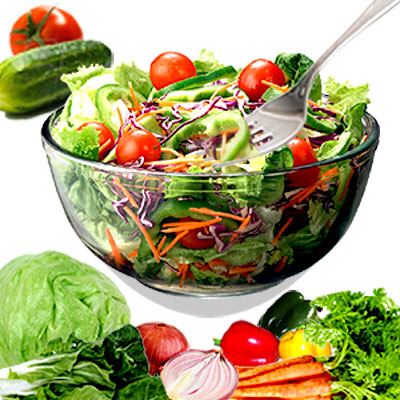 Food and Nutrition Facts
Food and Nutrition Facts Chamomile
Parsnip Soup
Dim Sum
Gazpacho Soup
Whole Grain Cereal
Jicama Nutrition
Bok Choy Stir Fry
Chia Seeds Benefits
Teff Nutrition
Kaniwa
Flax Seed
Wheatgrass Benefits
Kelp Benefits
Types of Chili Peppers
Medicinal Benefits of Pomegranate
Arugula Leaves
Maca Root
Pitaya Fruit
Benefits of Celery
Leek
Asparagus Benefits
Oyster Stew
Oyster Mushroom
Lupin Beans
Quinoa
Freekeh
Extra Virgin Olive Oil
Dill Pickle
Sauerkraut
Fat Burning Foods
Nutrition Chart
Food Combining
Calorie Counter
calories ...
Non Alcoholic Beverage
Punch Recipes
Food Label Nutrition
Homemade Sausages
Cooking Steak
Eating on a Budget
Budget Friendly Recipes
Quick Recipes
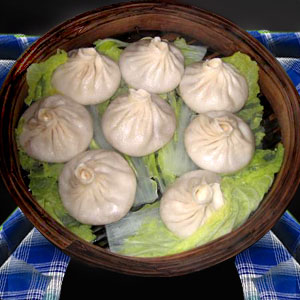 Healthy Packed Lunch
Healthy Packed Lunch Overnight Oats Recipes
Eggplant Casserole
Brunch Recipes
Burrito Recipes
Muffin Recipes
Cupcake Frosting
Apple Crisp
Stir Fry Cooking
Seafood Salad Recipe
Cooking Corn on the Cob
Finger Food Recipe
Sandwich Recipe
Bread Stuffing Recipes
Easy Chili Recipes
Picnic Recipes
Edible Mushroom Recipes
Mushroom Soup Recipes
Dip Recipe
Tapas Recipe
Corned Beef Recipe
Canned Salmon Recipe
Tilapia Recipes
Crumb Cake
Flourless Chocolate Cake
Regional Food
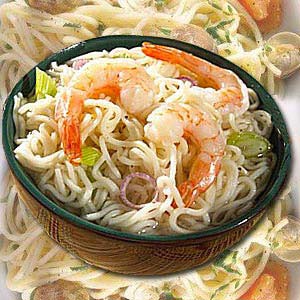 Lasagna Recipe
Lasagna Recipe Peruvian Ceviche
Chinese Food Recipe
Vietnamese Food Recipe
Malaysian Food
Korean Food Recipe
Indian Curry Recipe
Edible Rice Paper
Mexican Food Recipe
Quesadilla
Guacamole Dip
Italian Food Recipe
Spanish Food Recipe
Kosher Food
Falafel Recipe
Tandoori Chicken
Noodles
Canape
Couscous
Meatloaf
Chowder
Gumbo Recipe
Crockpot Recipes
Moroccan Food
Healthy Food
Pre Workout Snack
Matcha Tea
Simple food Swaps to Lose Weight
Foods to Beat Stress
Foods to beat Insomnia
Bone Density Foods
Prebiotic Foods
Kefir Grains
Agave Nectar
Spicy Trail Mix
Pesto Sauce
Homemade Hummus
Crab Cake Sauce
Bamboo Shoots Nutrition
Lemon Grass Plant
Butter Beans Recipes
Loose Green Tea
Seaweed Nutrition
Healthy Food
Low Fat Granola Bar
Steel Cut Oatmeal
Fruit Pizza
Pizza Toppings
Green Smoothie
Healthy Meal Planning
Delicious Mealtime Recipes
Heart Healthy Fats
Healthy Heart Recipe
Healthy Dinner Recipe
Healthy Dessert Recipe
Healthy Fast Food
Healthy Kid Recipe
Probiotic Food
Diabetic Friendly Foods
Fruit Salad Recipe
Bread Pudding
Tofu Recipe
Oat Bran
Broccoli Salad
Avocado Recipe
Iron Rich Food
Brain Foods
Antioxidant Food
Natural Diuretic
Low Fat Cooking Tips
Rice Pilaf Recipe
Low fat Chicken Recipe
Food Tips
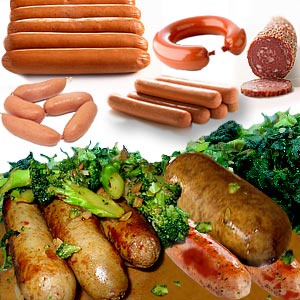
Sous Vide Cooking Technique
Natural Sugar Substitute
Stevia Sugar Substitute
Sunflower Seeds Nutrition
Bouquet Garni
Cake Decorating Tips
High Satiety Foods
Thanksgiving Dinner
Safe Food Storage
Frozen Food Storage Tips
Cold Storage Food Tips
Leftover Recipe
Food Pyramid
Dairy Free Food
Microwave Cooking
Food Intolerance
Homemade Ice Cream
Apple Cider Vinegar
Benefits of Honey
Beverage Cooler
Food Poisoning Symptom
Food Allergy Symptom
Food Addiction
Top of the Page: Iron Rich Food
Popularity Index: 101,470

